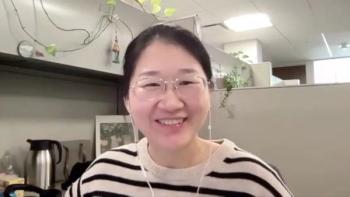
Tools for Managing Multiple Disease States Without Burning Out: Lindsey Valenzuela, PharmD
Remote monitoring and algorithm-based tools help pharmacists balance complex workloads in value-based care, says Lindsey Valenzuela, PharmD.
Value-based care environments are a
But how do pharmacists take on this responsibility without getting overwhelmed?
Valenzuela told The American Journal of Managed Care® (AJMC®) that smart infrastructure and remote monitoring can make this workload manageable. Tools such as algorithm-driven dashboards and cellularly enabled glucometers help pharmacists
“[Patients] with the highest priority rise to the top based on the algorithms from the input of their remote patient monitoring data,” she explained. “We can address really the right patient at the right time, which makes us more effective.”
This transcript has been lightly edited; captions were auto-generated.
Transcript
Does having 1 pharmacist manage multiple disease states increase their workload?
Putting all of those disease states on 1 pharmacist can seem like a burden. But when you are in a position to make changes and improvements to the medication profile for
The other piece for us—and because, again, we're in a
Because we have members that were managing their diabetes in the pharmacist programs, we can use the volume of patients that we're managing to get contracting on
You've made the pharmacist more efficient with the information that is now provided to them from the patient's home. We use a tool that takes in this information and helps to prioritize patient care, almost like a stoplight: red, yellow, green. Those with the highest priority rise to the top based on the algorithms from the input of their remote patient monitoring data, and so we can address really the right patient at the right time, which makes us more effective.
Yes, it can be burdensome to have a pharmacist overseeing a number of different disease states unless you have tools surrounding the pharmacists to make them more efficient.
Newsletter
Stay ahead of policy, cost, and value—subscribe to AJMC for expert insights at the intersection of clinical care and health economics.













































